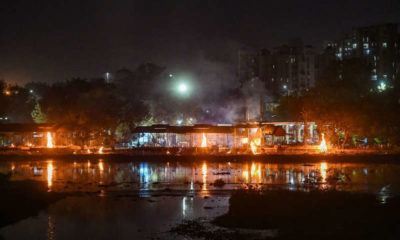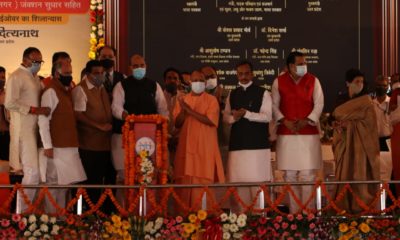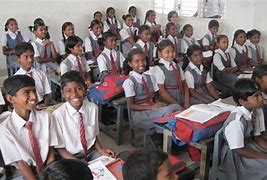National
UP, Bihar, Rajasthan: Worst states for women, J&K catching up
 New Delhi :Uttar Pradesh, Rajasthan and Bihar are the worst states for women, an IndiaSpend analysis of social indicators and demographic data of Indian states reveals.
New Delhi :Uttar Pradesh, Rajasthan and Bihar are the worst states for women, an IndiaSpend analysis of social indicators and demographic data of Indian states reveals.
Women in these states are among those who are most likely to be aborted as children, have the lowest literacy rates, marry earliest, die most frequently while pregnant, bear the most children, have the most crimes committed against them and are least likely to be employed.
As many as 376 million people live in UP, Bihar and Rajasthan – more than the populations of the US and the UK combined.
Here are eight indicators we considered from the Sample Registration Survey 2014 – released in June 2016 – the Census 2011 and the National Crime Records Bureau. The three states may not do worst in all indicators individually but collectively, they find the most mention.
1. Mean age of females at marriage: Women in West Bengal marry youngest (19.3 years), followed by UP and Rajasthan (19.4 years for both).
UP has the largest number of girls married between 10-19 years (2.1 million) in India, followed by West Bengal (1.3 million) and Bihar (1.25 million). One in four women in Rajasthan marries before the legal age of 18, as IndiaSpend previously reported.
Being educated helps girls resist early marriage “to a great extent”, revealed a 2013 study conducted by Harvard’s François Xavier Bagnoud Center for Health and Human Rights. Education also correlates with fewer and healthier children and healthier mothers.
2. Maternal mortality rate (MMR): At 27.8, UP has the highest MMR among all Indian states, followed by Rajasthan (23.9) and Bihar/Jharkhand (21.4).
In June 2016, the health ministry launched the Pradhan Mantri Surakshit Matritwa Yojana (Prime Minister safe pregnancy scheme, PMSMY), which will run parallel to the Janani Suraksha Yojana (JSY) and Janani Shishu Suraksha Karyakram (Mother child safety programme, JSSK).
It aims to provide ante-natal care for 30 million pregnant women on the ninth of every month from a specialist. Where government doctors are not available, those in private practices will join the effort.
3. Reproductive span: Women in Uttar Pradesh have IndiaÂ’s longest reproductive spans: 10 years. Since higher reproductive spans correlate with higher fertility rates, Uttar Pradesh women also bear the most children in any state, 4.14, according to Census 2011 data.
The reproductive lifespan of UP women is followed by those in Rajasthan (9.2 years) and Bihar (9.1 years), all above the average Indian reproductive span of 6.6 years.
The correlation between reproductive span and high fertility rates holds true for Rajasthan and Bihar too, with rates of 3.99 and 3.97 respectively. The average Indian fertility rate is 3.3.
Average births decline with an increase in education levels: The average births for women in India who are graduates and above is 1.9, against 3.8 for women who are illiterate, IndiaSpend reported in May 2016.
UP, Rajasthan and Bihar have female literacy and education levels below the Indian norm.
4. Average household size, percentage of households of six people or more: Households in UP are IndiaÂ’s largest, an average of 5.6 people, another indication that women bear more children than other states. This also means they have the largest burden of housework.
After UP, Rajasthan (5.5) and Jharkhand (5) report IndiaÂ’s largest families.
Furthermore, 44 per cent of households in UP have more than six people, followed by Rajasthan (38.8 per cent) and Jammu & Kashmir (34 per cent).
5. Crimes against women: As many as 38,467 crimes against women were registered in UP – one every 15 minutes – followed by West Bengal (38,299) and Rajasthan (31,151).
However, when it comes to crime rate-crimes per 100,000 population of women – Delhi has the highest rate (169.6), followed by Assam (123.4) and Rajasthan (91.4).
UP has a crime rate of 38.4, while BiharÂ’s rate is 31.3, these seemingly low rates likely due to low reporting of cases and fudged statistics, as IndiaSpend has reported.
India reports 26 crimes against women every hour, or one complaint every two minutes, IndiaSpend reported in September 2015.
6. Literacy rates: Bihar has IndiaÂ’s lowest female literacy rate of 51 percent of Bihari women are illiterate, followed by Rajasthan (52.1 per cent), Jharkhand (55.4 per cent) and UP (56.4 per cent), according to the Census 2011.
7. Female work-force participation rates: Bihar has the lowest female work-force participation rate (FWPR), with only 90 per 1,000 women employed. UP has a FWPR of 253 while Rajasthan has a rate of 453, higher than UP, Bihar and the national average of 331.
If as many women as men worked outside the home, IndiaÂ’s $2 trillion (Rs 134 lakh crore) gross domestic product (GDP) would increase by 27 per cent, IndiaSpend reported in March 2016.
8. Child sex ratio (CSR): At 834, Haryana has IndiaÂ’s worst child sex ratio, the number of females per thousand males in the age group 0-6, followed by Punjab (846) and Jammu & Kashmir (862).
At 888, Rajasthan has IndiaÂ’s fifth-worst child sex ratio.
UP is not among the five states with the worst CSRs, but its 902 is lower than the national average of 918; Bihar performs considerably better with a ratio of 935.
Apart from UP, Bihar and Rajasthan, a closer look at the data reveals that two indicators of female emancipation for Jammu & Kashmir (J&K) are worsening.
For instance, J&K is among the worst five states in average household size, percentage of households with families of six people or larger, child sex ratio, literacy rate and female work-force participation rate. Of these, the child sex ratio and female work-force participation rate have worsened since 2001, while the other indicators have improved.
J&K is the only state, apart from Rajasthan, which saw an absolute decline in CSR over 10 years to 2011; the CSR declined from 941 to 862, which means fewer girls are being born. Since maternal and child mortality has improved since 2001, it can only mean that girls are being aborted.
(09.07.2016. In arrangement with IndiaSpend.org, a data-driven, non-profit, public interest journalism platform. Devanik Saha is a New Delhi-based freelance journalist. The views expressed are those of IndiaSpend. The author can be contacted at [email protected])
National
Foodman Vishal Singh Honored for Hunger Free World Mission in Bangkok

Lucknow: Vishal Singh, a renowned social worker from Lucknow, also known as Foodman, has once again made India proud. He was honored by the Happy Hands Gloves Cooperative Limited Company in Korathai, Thailand, for his work with the Hunger Free World Mission.
The Hunger Free World Mission’s meeting was held in Korathai, Thailand, under Vishal Singh’s leadership. Representatives from several countries, including Mr. Raja Dwivedi (Managing Director of Happy Hands Gloves Limited), Thailand Coordinator Mr. Raja Mishra, and member Mr. Varun Singh, attended the event.

Under Vishal Singh’s leadership, the attendees took a pledge to work together toward creating a hunger-free world.
Speaking on the occasion, Vishal Singh explained that the main goal of the Hunger Free World Mission is social participation. He said the mission is not just about feeding people but also about meeting other basic needs of those who are struggling. The mission focuses on helping families of terminally ill patients in hospitals by providing food and shelter. It also works to fulfill essential needs like education, jobs, and care for the elderly.
For the last 16 years, the Vijay Sri Foundation has been providing free services, benefiting thousands of people. Vishal Singh highlighted that the mission aims to gain global recognition like other organizations such as WHO, WWF, and Red Cross, which work for social causes.
During this meeting, Vishal Singh was appointed as the Chairman of the Hunger Free World Mission by representatives from various countries. They also discussed holding regular meetings in different countries to push the mission forward.
Business tycoon Dr. Abhishek Verma has also supported this humanitarian mission, vowing to promote the idea of “Seva Parmo Dharma” (Service is the highest duty) worldwide. Vishal Singh praised him, stating that people like Dr .Abhishek Verma inspire others to work for the betterment of society.
Recently, Romania’s Ambassador, Mr . Daniela Sezonov Ţane, invited Vishal Singh to the Romanian Embassy in Delhi, where they discussed the mission in detail. Impressed by his humanitarian work, she honored Vishal Singh and invited him to Romania to take the mission forward .
Food man Vishal Singh has been serving the people of India for the past 16 years. Through the Vijay Sri Foundation, he provides free meals to cancer patients & their families ,shelter, and education for women & children along with running free old-age homes in Lucknow.
In addition to his humanitarian work, Vishal Singh also addresses issues like crime and corruption through his role as Chairman of Seva Path Media and Managing Director of Vijay Sri Foundation.

During the COVID-19 pandemic, Vishal Singh and his team worked tirelessly to provide food and help to the needy, including starving children, elderly citizens, and pregnant women. Despite contracting the virus himself, he continued to assist others after his recovery. He even created a life-saving oxygen regulator using household items, which was praised by doctors both in India and abroad.
In his address at the meeting, Vishal Singh spoke about his mission to create a hunger-free world. He pointed out that India’s large population, along with issues like unemployment and poverty, has caused the country to fall on the Hunger Index. He urged people to contribute just one handful of grains daily to help create a hunger-free world.
He concluded by saying that through social participation, we can empower the people around us, meet their basic needs, and work together to build a stronger, more prosperous, and developed society.























